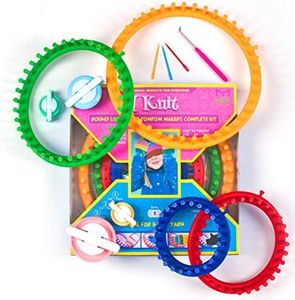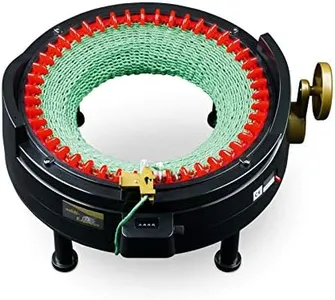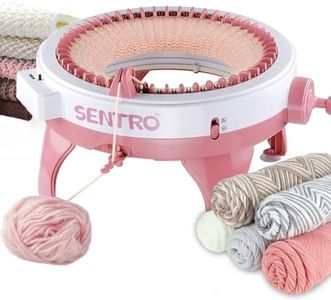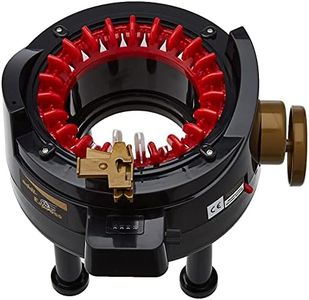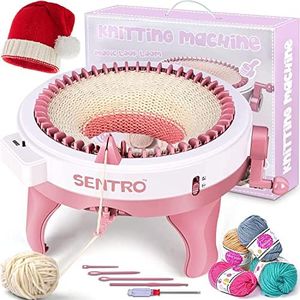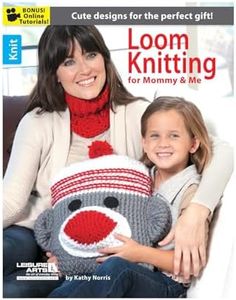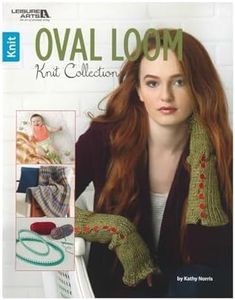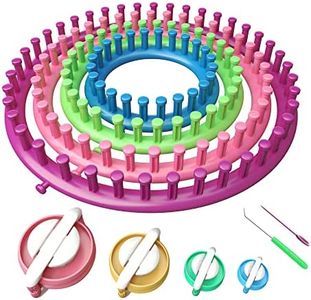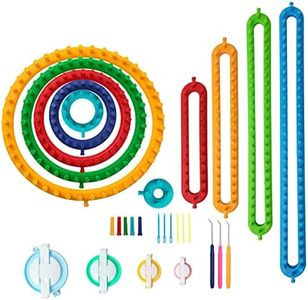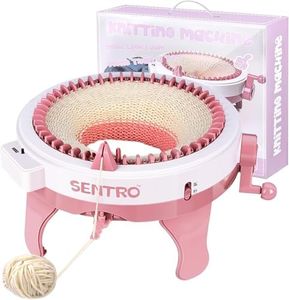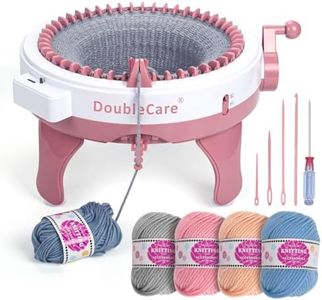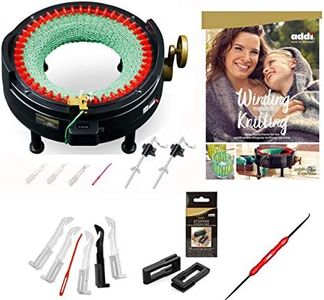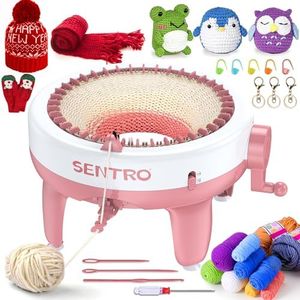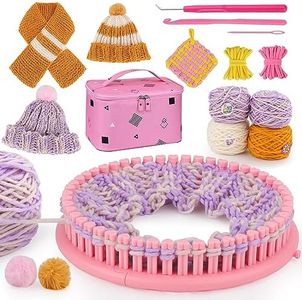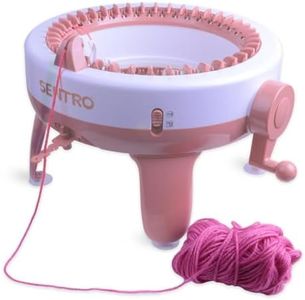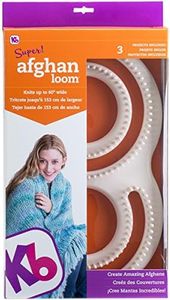We Use CookiesWe use cookies to enhance the security, performance,
functionality and for analytical and promotional activities. By continuing to browse this site you
are agreeing to our privacy policy
10 Best Knitting Machines And Looms 2025 in the United States
Recommended lists
How do we rank products for you?
Our technology thoroughly searches through the online shopping world, reviewing hundreds of sites. We then process and analyze this information, updating in real-time to bring you the latest top-rated products. This way, you always get the best and most current options available.

Buying Guide for the Best Knitting Machines And Looms
Choosing the right knitting machine or loom can greatly enhance your knitting experience, whether you're a beginner or an experienced knitter. The key is to understand the different specifications and how they align with your knitting needs and preferences. By focusing on the key specs, you can make an informed decision that will help you create beautiful and intricate designs with ease.Type of Machine or LoomThere are various types of knitting machines and looms, including manual, electronic, and punch card machines, as well as rigid heddle, table, and floor looms. The type of machine or loom you choose will depend on your skill level and the complexity of the projects you want to undertake. Manual machines and rigid heddle looms are great for beginners due to their simplicity, while electronic machines and floor looms offer more advanced features for experienced knitters.
GaugeGauge refers to the number of needles per inch on a knitting machine or the spacing of the warp threads on a loom. This spec is important because it determines the thickness of the yarn you can use and the fineness of the fabric you can create. Fine gauge machines and looms are suitable for lightweight yarns and delicate fabrics, while standard and bulky gauge machines are better for thicker yarns and heavier fabrics. Choose a gauge that matches the type of projects you plan to work on.
Bed WidthThe bed width of a knitting machine or the weaving width of a loom indicates the maximum width of the fabric you can create. This is important for determining the size of your projects. Smaller bed widths are suitable for accessories and smaller garments, while larger bed widths are necessary for creating larger items like blankets and wide garments. Consider the typical size of your projects when choosing the bed width.
Number of Needles or ShaftsThe number of needles on a knitting machine or the number of shafts on a loom affects the complexity of the patterns you can create. More needles or shafts allow for more intricate designs and patterns. Beginners may find machines or looms with fewer needles or shafts easier to use, while advanced knitters may prefer more needles or shafts for greater design flexibility.
Ease of UseEase of use encompasses the overall user-friendliness of the knitting machine or loom, including setup, operation, and maintenance. This is important because a machine or loom that is difficult to use can be frustrating and hinder your creativity. Look for features like clear instructions, easy threading, and straightforward controls. Beginners should prioritize ease of use to ensure a smooth learning curve, while experienced knitters may be comfortable with more complex machines.
PortabilityPortability refers to how easy it is to move and store the knitting machine or loom. This is important if you have limited space or plan to take your knitting on the go. Smaller, lighter machines and looms are more portable and easier to store, while larger, heavier ones may offer more stability and features but are less convenient to move. Consider your space and mobility needs when choosing a machine or loom.
Accessories and CompatibilityAccessories and compatibility refer to the additional tools and attachments that can be used with the knitting machine or loom, such as different types of needles, pattern cards, or weaving tools. These can enhance your knitting experience and expand the range of projects you can undertake. Check what accessories are included and what additional ones are available. Ensure that the machine or loom is compatible with the accessories you might need for your projects.
Most Popular Categories Right Now
